Created on June 22nd, 2025 at 03:09 pm
Table of Contents
The Recipe
Passover Cake Recipe
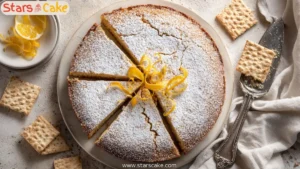
This soft and fluffy Passover sponge cake is flourless, dairy-free, and perfect for holiday celebrations. Made with matzo cake meal and orange zest, it’s a kosher-for-Passover dessert the whole family will love.
Type: Dessert
Cuisine: Jewish
Keywords: Passover cake recipes, kosher for Passover, matzo cake meal, flourless sponge cake, Passover desserts
Recipe Yield: 14 servings
Calories: 148 kcal
Preparation Time: PT30M
Cooking Time: PT1H
Total Time: PT1H30M
Recipe Ingredients:
- 8 egg yolks
- 1 cup white sugar
- 1 tablespoon orange zest
- ¾ cup matzo cake meal
- ¼ cup potato starch
- 8 egg whites
- ½ cup white sugar
- 1½ tablespoons fresh orange juice
Step By Step
- Preheat your oven to 325°F (165°C). Line the bottom of a 10-inch tube pan with parchment paper.
- In a medium bowl, whisk 8 egg yolks until pale and thick, about 5–7 minutes.
- Gradually add 1 cup sugar and orange zest to the yolks, whisking until light and creamy.
- Sift matzo cake meal and potato starch together into a bowl. Set aside.
- In a clean bowl, begin beating 8 egg whites until foamy.
- Gradually add ½ cup sugar and continue beating until stiff peaks form.
- Fold the dry mixture into the yolk mixture, alternating with the orange juice.
- Gently fold in one-third of the beaten egg whites to lighten the batter.
- Carefully fold in the remaining egg whites until no streaks remain.
- Pour the batter evenly into the prepared pan and smooth the top.
- Bake for 45–60 minutes until a toothpick inserted comes out clean.
- Invert the pan onto a wire rack and allow to cool completely upside down.
- Use a sharp knife to loosen the cake from the sides of the pan before removing.
Summary
This soft and fluffy Passover sponge cake is flourless, dairy-free, and perfect for holiday celebrations. Made with matzo cake meal and orange zest, it's a kosher-for-Passover dessert the whole family will love.
Tips
- Use room temperature eggs for best volume.
- Sift matzo cake meal and potato starch together for lighter texture.
- Do not grease the pan—this helps the cake rise evenly.
- Cool the cake upside down to avoid collapse.
- Wrap slices tightly if freezing to maintain moisture.
When Passover rolls around, Emma’s kitchen fills with the scent of oranges, vanilla, and something even sweeter: family tradition. Every year, she and her little ones gather around the mixer, giggling as they separate eggs and sneak tastes of whipped meringue. Passover cake recipes like the one you’re about to try are more than just desserts—they’re edible memories. Whether it’s your grandmother’s sponge cake or a fun chocolate twist you dream up with your kids, these Passover cake recipes carry generations of flavor through one joyful holiday table.
What makes these Passover cake recipes special is their clever use of ingredients that honor the holiday’s sacred no-leavening rules—no flour, no baking powder, just simple pantry items transformed into something soft, golden, and celebration-ready. This article isn’t just about one cake—it’s about how you can adapt this classic Passover cake recipe to fit your flavor, dietary, and family traditions.
Whether you’re new to Jewish baking or you’ve been searching for Passover desserts that taste like more than matzo, this guide covers it all. You’ll find the step-by-step recipe, common baking tips, flavor variations, and expert advice Emma loves sharing with her readers. So grab your apron—it’s time to whip up something meaningful.

Why Passover Cake Recipes Are So Meaningful
I still remember my first Passover with little hands helping me in the kitchen. The kids were just old enough to hold a whisk, and we decided to make a sponge cake together—no flour, no fancy tricks. Just a bowl of matzo cake meal, zesty oranges, and the bubbly laughter of family in the air. Since then, Passover cake recipes have become a yearly tradition for us, and they’re easier (and more fun) than you might think.
The magic lies in how little it takes to create something so soft and satisfying. No leavening? No problem. Eggs do the heavy lifting here—literally. With enough whisking and folding, they help create the perfect texture. Matzo cake meal replaces flour, and a splash of fresh juice brings in flavor. It’s this beautiful balance of following tradition while baking with creativity that makes Passover desserts so memorable.
If you’re feeling stuck in a rut with dry matzo cookies or overly sweet macaroons, this guide is your go-to for tried-and-true Passover cake recipes that are moist, flavorful, and deeply meaningful.
Looking for inspiration beyond sponge cake? You’ll love the bright, bakery-style lemon mascarpone cake or these naturally gluten-free carrot cake cupcakes for weekday treats. And yes—they’re all adaptable for Passover too!
How These Recipes Fit the Holiday Rules (Without Being Boring!)
So, what makes a cake kosher for Passover? During Passover, observant Jewish families avoid chametz—leavened grain products. That means no regular flour or baking powder. But that doesn’t mean desserts are off the table. In fact, some of the most beloved Passover cake recipes were invented because of these limitations.
Instead of flour, we use matzo cake meal, a finely ground version of matzo, and potato starch, which adds lightness and helps maintain structure. Eggs, especially whipped whites, provide the lift. Flavor boosters like orange zest, cocoa powder, or cinnamon create warmth and variety—just like in your favorite everyday cakes.
One trick I always share: make sure to sift your dry ingredients together before folding them in. It keeps the batter airy and prevents heavy spots. Another? Use a tube pan with parchment paper on the bottom—it helps with even baking and clean removal.
If you’re in the mood for something a little more adventurous, check out our fusion-style baklava cake or the playful lunchbox cake, both of which could be adapted for Passover with some quick swaps. It’s all about keeping the spirit of the holiday while making space for fun and flavor.
The Classic Passover Sponge Cake Recipe (With Variations)
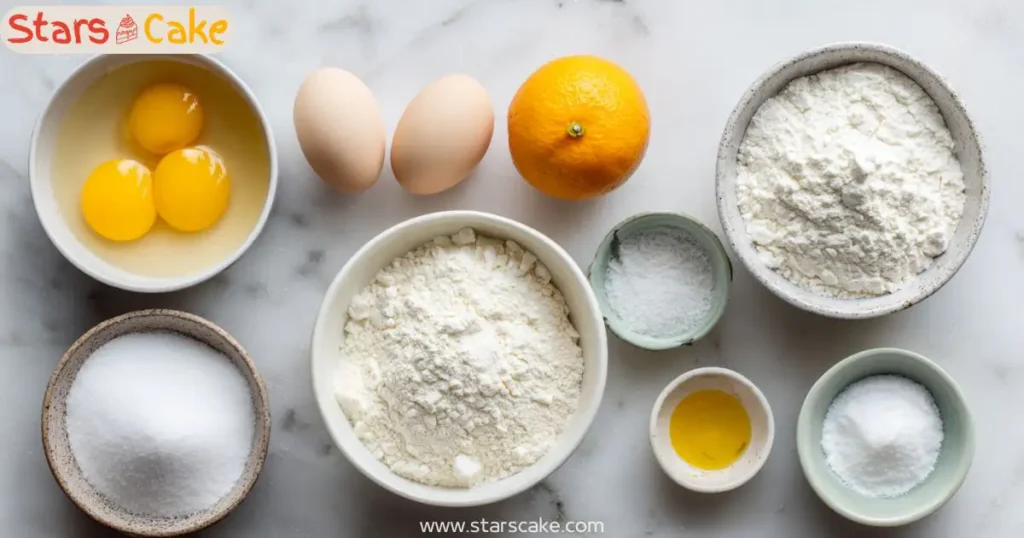
Ingredients & Step-by-Step Directions (Beginner-Friendly)
This tried-and-true Passover sponge cake is one of those recipes that brings everyone back for seconds—and it’s naturally flourless, thanks to matzo cake meal and potato starch. The base is light, fluffy, and citrus-kissed with orange zest. And the best part? It’s surprisingly simple, even for new bakers.
Experimenting with Passover cake recipes keeps the holiday menu exciting and helps build new family traditions.
Ingredients:
- 8 egg yolks
- 1 cup white sugar
- 1 tablespoon orange zest
- ¾ cup matzo cake meal
- ¼ cup potato starch
- 8 egg whites
- ½ cup white sugar (for whites)
- 1½ tablespoons fresh orange juice
Directions:
- Preheat your oven to 325°F (165°C). Line the bottom of a 10-inch tube pan with parchment (don’t grease the sides).
- In a medium bowl, whisk egg yolks until pale and thick—about 5–7 minutes. Gradually add 1 cup sugar and the orange zest.
- In a separate bowl, sift the matzo cake meal and potato starch together and set aside.
- Beat the egg whites in a clean, dry bowl until foamy. Gradually add the remaining ½ cup of sugar. Continue beating until stiff peaks form.
- Gently fold the dry ingredients into the yolk mixture, alternating with orange juice. Use soft strokes to keep the batter light.
- Fold in ⅓ of the egg whites to lighten the batter. Then carefully fold in the remaining whites until no white streaks remain.
- Pour the batter into your prepared pan and smooth the top gently.
- Bake for 45 minutes to 1 hour. The cake is done when a toothpick inserted in the center comes out clean.
- Immediately invert the pan onto a wire rack and let it cool upside down. Once cool, run a knife along the edges to release.
This is the kind of dessert that brings out smiles at every Passover meal. And just like the protein mug cake that’s perfect for weeknights, this sponge cake delivers big flavor with minimal effort. Want to get the kids involved? Emma’s youngest loves making mini versions using a muffin tin.
For another playful twist on classics, check out the Bluey cake—a hit with little helpers.
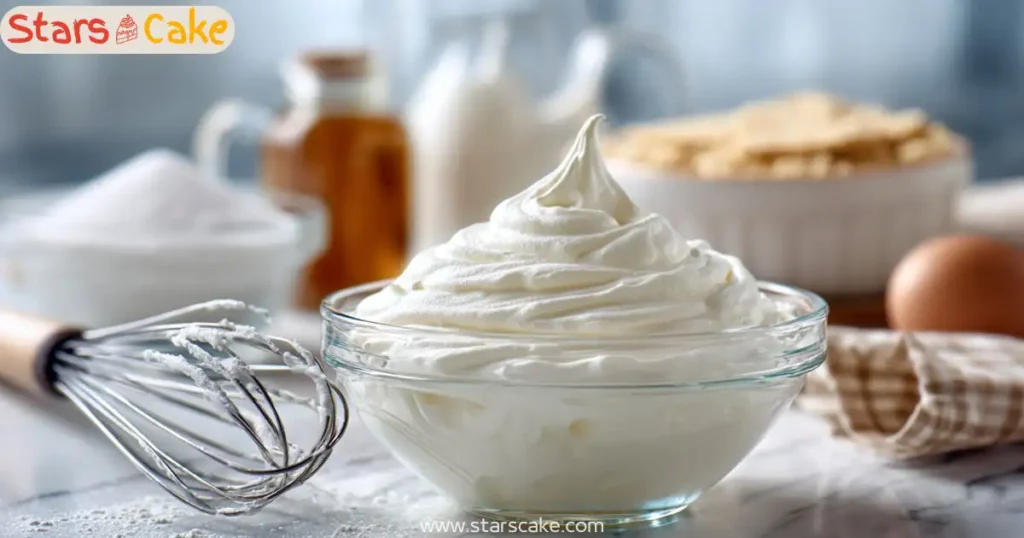
Delicious Variations to Try This Year
Passover doesn’t have to mean plain or boring desserts. Once you’ve mastered the base sponge cake, the sky’s the limit. The classic is light and citrusy, but it can be customized to suit your taste or what you’ve got on hand in the pantry.
Chocolate Passover Cake:
Just whisk ½ cup of unsweetened cocoa powder into the dry ingredients for a rich, chocolatey upgrade. It pairs beautifully with whipped coconut cream or fresh raspberries. This one’s a favorite when Emma’s family wants something indulgent but still kosher for Passover.
Lemon-Almond Version:
Replace the orange zest and juice with lemon zest and juice. Stir in a teaspoon of almond extract for a nutty aroma. This version feels like spring in every bite and makes a great Seder finale.
Cinnamon-Honey Swirl:
Add 1 teaspoon cinnamon to your dry ingredients and swirl in 2 tablespoons of honey into the batter before baking. It’s cozy, comforting, and perfect with tea.
Gluten-Free Adaptation Tip:
Matzo cake meal is naturally not gluten-free—but you can substitute it with certified gluten-free matzo meal if needed. Just make sure it’s finely ground for the right texture.
Want more inspiration for fun seasonal bakes? The citrus-forward lemon mascarpone cake is a great base idea for citrus Passover cakes, while these gluten-free carrot cake cupcakes can be adapted with matzo meal instead of flour for a nutty, spiced flavor that fits the holiday perfectly.
Experimenting with Passover cake recipes keeps the holiday menu exciting and helps build new family traditions. So try your favorite twist—and don’t forget to let the little ones sprinkle a bit of powdered sugar on top. It’s their favorite part.
Storage Tips, Troubleshooting & Serving Ideas
Avoid Dry Cake: Troubleshooting Common Issues
Sponge cakes are magical, but they can be a little fussy if you don’t know the tricks. One of the most common problems with Passover cake recipes—especially ones made without flour—is dryness or sinking after baking. But don’t worry. With Emma’s kitchen-tested advice, your cake will stay tall, fluffy, and moist.
These kinds of practical baking and storage tips aren’t just helpful—they keep your Passover cake recipes from being a one-hit wonder.
First, pay close attention when whipping the egg whites. They need to form stiff peaks—but not dry ones. Underbeaten whites won’t hold the cake structure, and overbeaten ones can lead to collapse. Use a clean, grease-free bowl and stop mixing as soon as you see glossy, firm peaks that don’t slide when you tilt the bowl.
Another tip: fold the egg whites in gently, in three stages. If you’re too aggressive, you’ll deflate all that lovely air you just worked so hard to beat in.
If you notice your cake seems a little dry, you might have overbaked it. Always check at the 45-minute mark by inserting a toothpick into the center. If it comes out with just a few moist crumbs, it’s ready.
Looking for other unique Passover cake recipes to try? You can remix this into a chocolate swirl, a bundt style, or even lemon almond mini cakes that fit the tradition while adding variety.
To keep things moist and flavorful, you can serve your cake with a simple fruit compote or dairy-free whipped topping. Emma’s family loves theirs drizzled with fresh orange glaze or paired with stewed strawberries—especially when they’re craving something as creative as the pickle cake or kid-approved boba cake.
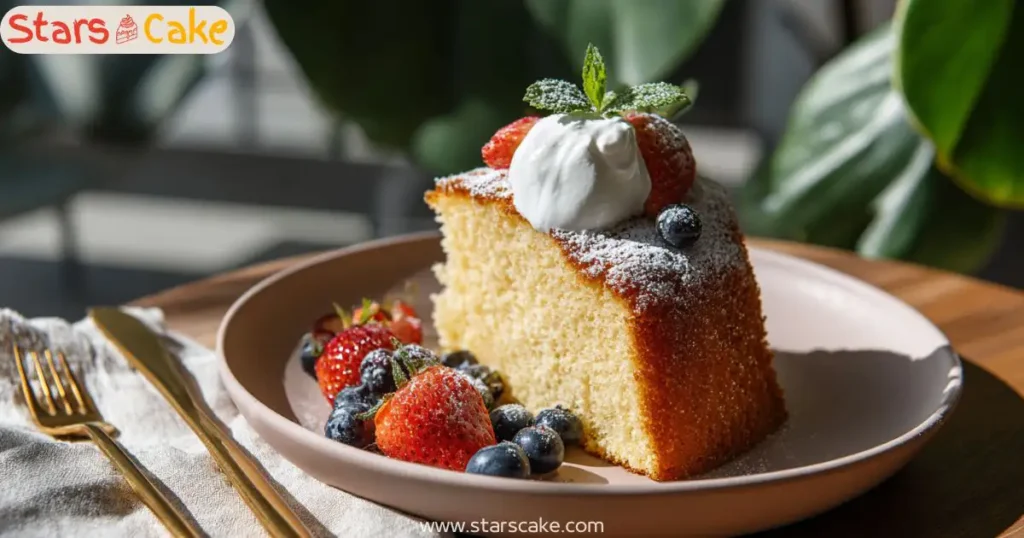
Serving Suggestions & How to Store for Freshness
Once your cake has cooled, the next step is storing it so it stays delicious until the last slice. Here’s how to do it right:
- At room temperature: Wrap the cake tightly in plastic wrap and store in an airtight container for up to 2 days. It’s best eaten fresh but holds up well with proper wrapping.
- In the fridge: Keep it covered in a cake dome or a container lined with parchment to avoid drying. Let it come to room temp before serving.
- In the freezer: Yes, you can freeze sponge cake! Slice it first, wrap slices individually in plastic and foil, and freeze for up to 1 month. Thaw overnight in the fridge and warm slightly before serving.
When it comes time to serve, think beyond plain slices. A dusting of powdered sugar and a ribbon of citrus peel add elegance with zero effort. Hosting a crowd? Serve this cake alongside chocolate-covered matzo or even Passover brownies for a sweet trio.
If you’re looking for fun presentation ideas for a kid-friendly holiday spread, Emma recommends borrowing color themes or piping techniques from cute styles like smash cakes or character cakes. Even a simple glaze can make your sponge cake shine like a bakery treat.
These kinds of practical baking and storage tips aren’t just helpful—they keep your Passover cake recipes from being a one-hit wonder. With just a bit of planning, you can make ahead, serve beautifully, and impress guests without stress.
Cultural Touch & Reader Questions Answered
A Sweet Slice of Tradition: The Story Behind the Sponge Cake
When we think of Passover cake recipes, it’s not just about ingredients—it’s about tradition. Sponge cake has long been the go-to dessert on the Seder table because it follows the rules of the holiday while still delivering flavor and joy. No flour, no yeast, just eggs, matzo meal, and love.
Historically, sponge cake became a staple because of its simplicity and symbolic texture—light, airy, and made from humble ingredients. That’s part of the magic. It reflects the heart of Passover: celebrating freedom, gratitude, and family. Emma often tells her kids that every bite is a little piece of history.
Today, modern Jewish families are remixing those traditions. Instead of sticking to just one version, they’re adding flavor twists—cocoa, lemon, almond—and turning sponge cakes into cupcakes, layer cakes, and even mini bundt shapes. At Emma’s house, they’ve even made citrus-glazed sponge muffins topped with chocolate chips for a sweet Seder surprise.
If you’re feeling adventurous, look at how strawberry banana pudding can be reimagined as a no-flour trifle. Or turn this recipe into a layered birthday treat inspired by this happy birthday cake, using Kosher-for-Passover whipped cream and berries.
These answers reflect real questions Emma has heard from readers and friends who are looking for Passover cake recipes that honor the rules and still taste amazing.
Passover Cake Recipes FAQs
What cake can you eat on Passover?
Any cake made without chametz (leavened grain) is fine. That means no regular flour or baking powder. Instead, use matzo cake meal, potato starch, eggs, and Kosher-for-Passover flavorings. Sponge cakes, nut-based tortes, and flourless chocolate cakes are all common.
What are the rules for Passover desserts?
Passover desserts must be free from chametz and kitniyot (for some). This means avoiding wheat, barley, oats, rye, and spelt unless they’re in the form of certified matzo. No leavening agents, but eggs and air-whipping do the job beautifully!
Is Passover cake meal the same as matzo meal?
Not exactly. Matzo meal is coarser—like breadcrumbs. Matzo cake meal is finely ground and better for baking soft, light-textured desserts like sponge cake. Think of it as the Passover version of all-purpose flour.
What substitute for flour during Passover?
Use matzo cake meal or potato starch for baking. Almond flour and coconut flour are also popular in gluten-free Passover cake recipes. Just make sure they’re labeled Kosher for Passover.
What are the 5 forbidden foods on Passover?
Wheat, barley, rye, oats, and spelt—when they’ve come in contact with water and fermented. These grains are forbidden unless baked into certified matzo.
Is cheesecake OK for Passover?
Yes—if it’s made with a crust from crushed Kosher-for-Passover cookies or matzo. The filling (cream cheese, eggs, sugar) is already chametz-free. Many families make crustless versions to keep it simple.
These answers reflect real questions Emma has heard from other parents and readers over the years. Baking for Passover doesn’t have to feel like a mystery—it can be as fun and fulfilling as any other celebration. Especially with Passover cake recipes that deliver on taste and meaning.
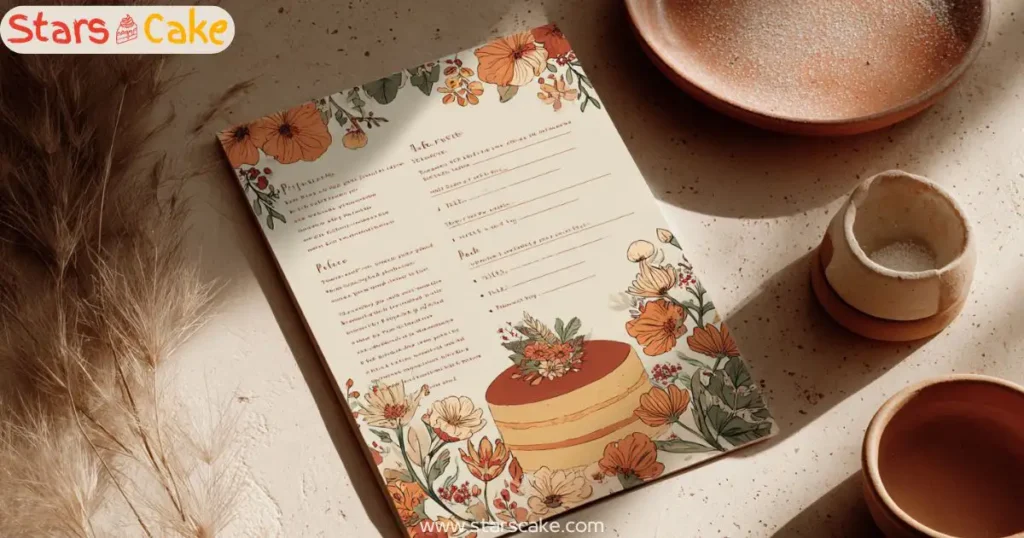
Conclusion
There’s something deeply comforting about baking a cake that’s been passed down, tweaked, and loved by generations. Emma’s Passover cake recipes are just that—timeless, joyful, and full of family flavor. Whether you stick to the classic sponge or try a chocolate twist, you’re creating more than dessert. You’re building sweet holiday memories that kids will carry with them for years to come.
Emma’s Passover cake recipes are just that—timeless, joyful, and full of family flavor. Whether you stick to the classic sponge or try a chocolate twist, you’re creating more than dessert.
For even more Passover cake recipes, explore family-friendly twists like layered mini cakes or nut-free citrus bakes that turn simple ingredients into something spectacular.
So this year, as you plan your Seder or fill your dessert table, remember: it doesn’t have to be complicated to be meaningful. A few simple ingredients, some little helping hands, and a warm oven—that’s all it takes. For more baking inspiration beyond the holiday, don’t miss these fun family picks like the smash cakes or fruity strawberry banana pudding.
Happy baking, and Chag Sameach from Emma and the StarsCake family!


